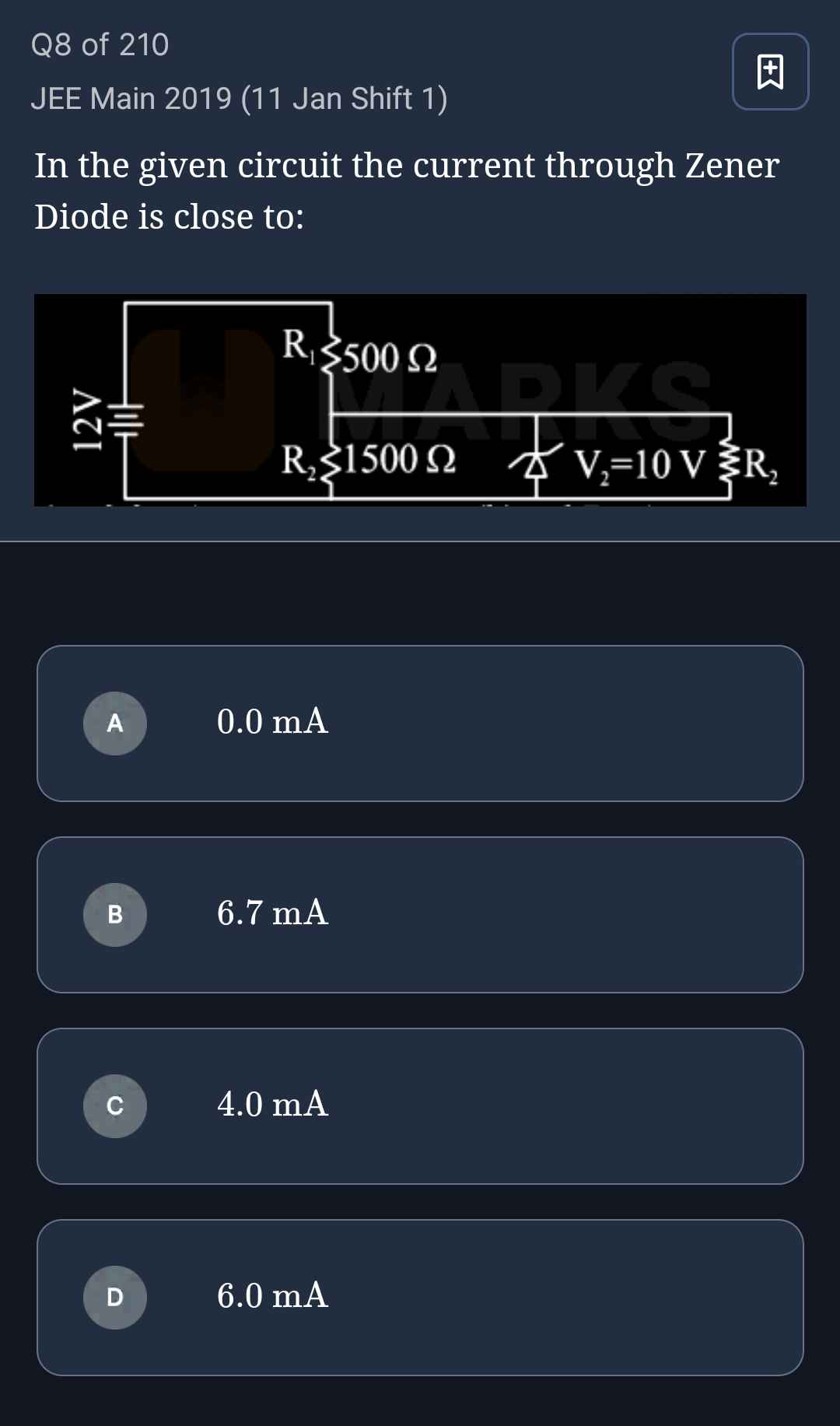15 Replies
@Gyro Gearloose
Note for OP
+solved @user1 @user2... to close the thread when your doubt is solved. Mention the users who helped you solve the doubt. This will be added to their stats.if the voltage in the circut is more than the breakdown volatage of zenner diode then it will have breakdown voltage across it
By circuit u mean the battery's voltage?
yeah

Doesn't work here
We need to see if the voltage across the diode itself is more than or equal it's breakdown
Here we can use kcl for that, it's 7.2 volts across the diode
Here idk
battery is 10v
out of that 10v, 5v will go to zener diode (and its parallel branches) since diode can't handle more than 5
remaining voltage (10-5=5v) will go to the 1 kiloohm resistor
the point of the zener diode is to maintain the 5V potential difference
is the answer 6.7mA ?
0 mA
As it doesn't have breakdown voltage across it, we can use kcl at 500ohm and 1500 ohm junction
So current is in microamperes which is negligible
That's what's not clear to me, how can we surely say 5v is going to 1 kiloohm resistor
Ofc we want atleast 5v across zener
But still we can't just assume it right? Or can we?
observe how the zener diode is reverse biased
a reverse biased diode has a very high resistance, theoretically infinity
will a device with such a high resistance not try to take up as much voltage as possible (without the device itself breaking)?
Btw can u tell me how u got 6.7mA
Oh i get it now, thanks
i did some mistake i mixed a question i was doing at the time and this one 💀
answer is zero
+solved @hithav @Nimboi
Post locked and archived successfully!
Archived by
<@1275829425933385788> (1275829425933385788)
Time
<t:1733111302:R>
Solved by
<@726641475080683522> (726641475080683522), <@717724055217635398> (717724055217635398)
